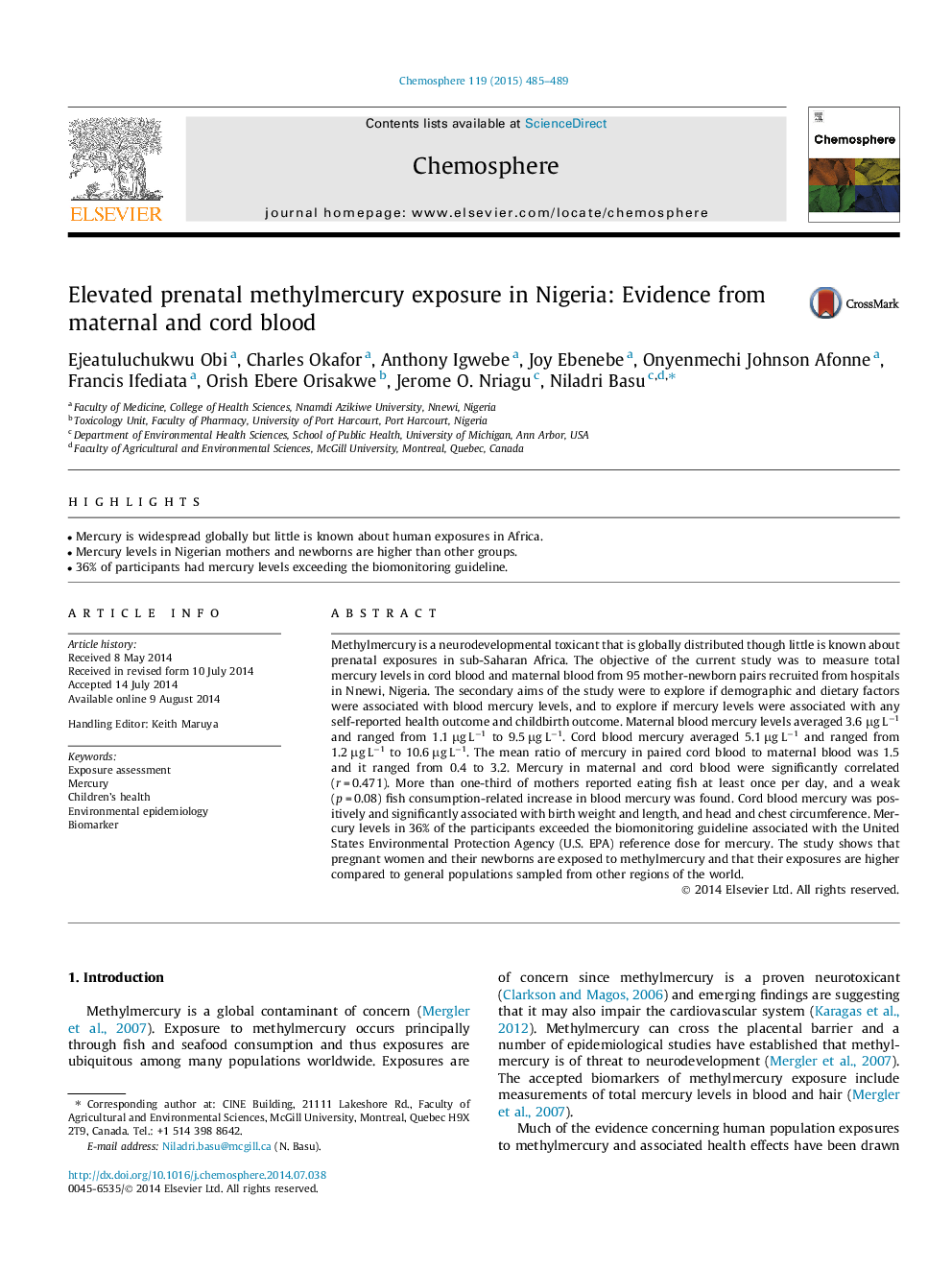| Article ID | Journal | Published Year | Pages | File Type |
|---|---|---|---|---|
| 4408659 | Chemosphere | 2015 | 5 Pages |
Abstract
Methylmercury is a neurodevelopmental toxicant that is globally distributed though little is known about prenatal exposures in sub-Saharan Africa. The objective of the current study was to measure total mercury levels in cord blood and maternal blood from 95 mother-newborn pairs recruited from hospitals in Nnewi, Nigeria. The secondary aims of the study were to explore if demographic and dietary factors were associated with blood mercury levels, and to explore if mercury levels were associated with any self-reported health outcome and childbirth outcome. Maternal blood mercury levels averaged 3.6 μg Lâ1 and ranged from 1.1 μg Lâ1 to 9.5 μg Lâ1. Cord blood mercury averaged 5.1 μg Lâ1 and ranged from 1.2 μg Lâ1 to 10.6 μg Lâ1. The mean ratio of mercury in paired cord blood to maternal blood was 1.5 and it ranged from 0.4 to 3.2. Mercury in maternal and cord blood were significantly correlated (r = 0.471). More than one-third of mothers reported eating fish at least once per day, and a weak (p = 0.08) fish consumption-related increase in blood mercury was found. Cord blood mercury was positively and significantly associated with birth weight and length, and head and chest circumference. Mercury levels in 36% of the participants exceeded the biomonitoring guideline associated with the United States Environmental Protection Agency (U.S. EPA) reference dose for mercury. The study shows that pregnant women and their newborns are exposed to methylmercury and that their exposures are higher compared to general populations sampled from other regions of the world.
Related Topics
Life Sciences
Environmental Science
Environmental Chemistry
Authors
Ejeatuluchukwu Obi, Charles Okafor, Anthony Igwebe, Joy Ebenebe, Onyenmechi Johnson Afonne, Francis Ifediata, Orish Ebere Orisakwe, Jerome O. Nriagu, Niladri Basu,
